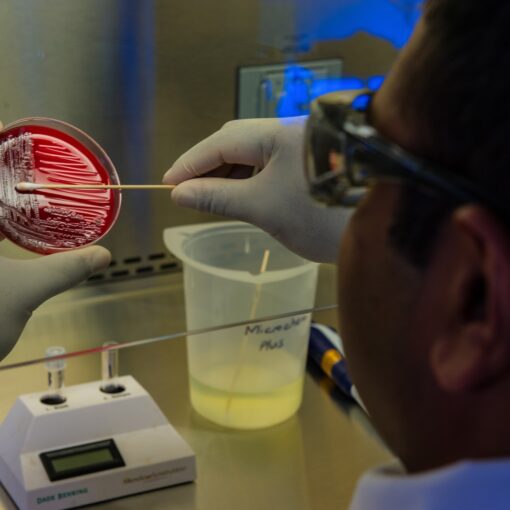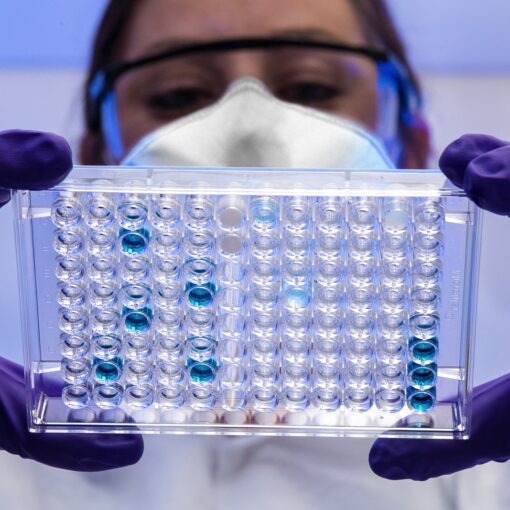Please Note: This post may contain affiliate links. If you click one of them, we may receive a commission at no extra cost to you. As an Amazon Associate, I earn from qualifying purchases.
Page Menu
Leprosy is a chronic, infectious disease caused by the bacterium Mycobacterium leprae. Leprosy is typically contracted through contact with an infected person's saliva or mucus. It can also be contracted through contact with the skin or eyes. Symptoms of leprosy include skin lesions that may become sores, numbness and tingling in the arms and legs, and difficulty moving or speaking. There is no cure for leprosy, but it can be treated with antibiotics.
Key Concepts and Top Takeaways
– Recognize symptoms: Look for skin lesions, numbness, and muscle weakness.
– Seek early diagnosis: Consult a healthcare provider if you notice any symptoms.
– Understand transmission: Know that leprosy spreads through prolonged contact with an infected person.
– Follow treatment plans: Adhere to prescribed antibiotics for the full duration to ensure recovery.
– Monitor skin health: Regularly check for new lesions or changes in existing ones.
– Educate yourself about stigma: Combat misconceptions and promote understanding of leprosy.
– Practice good hygiene: Maintain cleanliness to prevent secondary infections.
– Join support groups: Connect with others affected by leprosy for emotional support.
– Inform close contacts: Advise those who may have been exposed about potential risks.
– Stay informed on research: Keep up-to-date with advancements in leprosy treatment and prevention.

Leprosy is a chronic and often disabling disease caused by the bacterium Mycobacterium leprae. It is characterized by skin lesions, muscle weakness, and loss of sensation. The disease can be spread through contact with droplets from an infected person's nose or mouth, or through contact with infected soil or water. Leprosy symptoms can vary significantly from person to person and can range from mild to life-threatening.
The symptoms of leprosy can vary greatly from person to person, depending on their immune system response to the infection. Some common symptoms of leprosy include skin sores, fatigue, fever, and a loss of sensation in the hands and feet. There are also some major complications that can arise from leprosy, including nerve damage, blindness, and hearing loss. In order to prevent leprosy from spreading and to treat those who do have it, it is important to know the causes and risk factors for this disease.
Symptoms of Leprosy
Leprosy is a chronic infectious disease caused by the bacteria Mycobacterium leprae. There are three types of leprosy: Hansen's disease, lepromatous leprosy, and pure-cell leprosy. Symptoms of leprosy may include skin lesions, nerve damage, and respiratory difficulties. Leprosy can be treated with antibiotics, but it often leads to permanent disability.
It can affect any part of the body, but is most commonly seen in the skin, peripheral nerves, eyes, and ears. Symptoms of leprosy include muscle weakness and atrophy (wasting away of muscle tissue), which can lead to severe disability. Muscle weakness is one of the most common symptoms of leprosy and can be very debilitating. In some cases, it can prevent people from performing even the simplest everyday activities such as walking or standing.
There is no known cure for leprosy, but there are treatments that help manage symptoms. Treatment options include antibiotics, analgesics (painkillers), and prosthetics (devices that help people with disabilities to perform basic tasks).
Skin lesions are a common symptom of leprosy. They can be found anywhere on the body but are most commonly seen on the hands and feet. Lesions can vary in size and shape, and may be red, inflamed, or scaly. The presence of skin lesions is an indicator that someone has leprosy and should be reported to a health care provider.
Nerve damage is a common symptom of leprosy. This damage can cause problems with the nervous system, including weakness, numbness, and tingling. In some cases, nerve damage can lead to disabilities such as paralysis. Fortunately, most nerve damage caused by leprosy can be treated with medication and therapy.
Respiratory difficulties are one of the most common symptoms of leprosy. In fact, up to 90% of people with leprosy experience some form of respiratory difficulty. However, not everyone who experiences respiratory difficulties due to leprosy has contracted the disease from a person with leprosy. Some people simply have a higher risk for developing respiratory difficulties due to their condition.
The main cause of respiratory difficulties in people with leprosy is an infection called Mycobacterium avium complex. This infection attacks the lungs and can cause a number of problems including coughing, chest pain, and shortness of breath. It's important to get treatment for M. avium complex if you're experiencing any of these symptoms because it can make your condition much worse.
Causes of Leprosy
Leprosy is a long-term, chronic disease that results from the infection of the skin with Mycobacterium leprae. There are three main causes of Leprosy: direct contact with an infected person, exposure to Mycobacterium leprae through respiratory droplets, or receiving blood or body fluids from someone who has the disease. The disease can be severe and can cause permanent damage to the skin, nerves, and bones. There is no cure for Leprosy, but treatment focuses on managing the symptoms and preventing further spread of the disease.
Direct contact with leprosy patients is a leading cause of the disease. The World Health Organization (WHO) state that “direct contact, either through skin-to-skin contact or contact with body fluids, is the most effective means of acquiring leprosy.”
The organism Mycobacterium leprae can be transmitted through close and prolonged skin-to-skin contact with an infected person. In many cases, exposure to contaminated surfaces can also transmit the disease. Persons who are in close proximity to known carriers of M. Leprae often develop the disease even if they do not themselves contract the infection. In some cases, only a small number of close contacts are needed for an individual to become infected.
Leprosy is a chronic infectious disease caused by the bacterium Mycobacterium leprae.
Mycobacterium leprae is the cause of leprosy, an illness that can be debilitating and disfiguring. In recent years, more people have been exposed to M. leprae as a result of increased travel to areas where the disease is endemic. Although there is no cure for leprosy, early diagnosis and treatment with antibiotics can prevent serious health complications.
Leprosy is a debilitating and deadly disease caused by the bacterium Mycobacterium leprae. Historically, the disease was treated with surgery and amputation of infected limbs. However, today there is a much more effective treatment available – receiving blood from someone who has contracted leprosy.
There are two ways to receive blood from someone who has leprosy: through an open wound or through a vein. The open wound method is preferred because it does not require any special precautions and does not put the donor at risk for infection. The downside is that this method requires close supervision and often results in high rates of infection. The vein method is less risky but can be more difficult to perform.
Risk Factors for Leprosy
Leprosy is a debilitating and incurable disease caused by the bacterium Mycobacterium leprae. There are many risk factors for contracting leprosy, including: being of African, Asian, or Southeast Asian descent; having a family history of the disease; being born in an area where leprosy is endemic; having contracted the disease as a child; being exposed to the bacterium while living in an endemic area; and receiving prior treatment with antibiotics. There is no cure for leprosy, but currently available treatments can improve symptoms significantly.
There is a higher incidence of leprosy in people who are of African American descent. This is thought to be due to a combination of factors including a greater susceptibility to the disease and the fact that many African Americans are unaware they have it.
Leprosy is caused by the bacterium Mycobacterium leprae and can affect both the skin and mucous membranes. It can cause widespread damage, leading to loss of function in different parts of the body. The National Leprosy Foundation (NLF) reports that there are over 100,000 people living with leprosy worldwide, and that there is an urgent need for more effective treatment options.
There are several ways in which being of African American descent can increase one's risk of contracting leprosy.
Being Asian as a risk factor for leprosy is well-known, but little is known about the prevalence of the disease within this population. According to a study conducted by the World Health Organization in 2003, there are 243 cases of leprosy per 100,000 people in East and Southeast Asia. While this number may seem high, it's important to keep in mind that it's still a relatively low prevalence rate when compared to other regions of the world. It's also worth noting that this figure only includes confirmed cases – researchers believe there may be many more leprosy sufferers who go undiagnosed and unreported.
There are several reasons why being Asian may increase your risk of contracting leprosy. For starters, Asians are more likely than other ethnic groups to be born with milder forms of the disease.
There is a strong genetic basis for leprosy susceptibility, with a family history of the disease being one of the strongest risk factors. Inherited genes play an important role in determining how well someone responds to antibiotics and how severe their symptoms will be.
Leprosy is endemic in many countries in the world and is considered a preventable disease. The World Health Organization estimates that there are currently about two million people who are affected with leprosy, and it is estimated that there are about ten thousand new cases of leprosy each year. There are four types of leprosy: tuberculoid, erythematous, mucocutaneous, and multiforme. Persons who are infected with leprosy may not show any symptoms until they have developed severe lesions on their skin or in the nervous system. If left untreated, leprosy can lead to death due to respiratory failure or stroke.
Infectious diseases are a leading cause of death globally, accounting for more than three quarters of all deaths. Of these, two thirds are due to infections caused by viruses, bacteria and fungi. One of the most serious infections is leprosy, which is caused by the bacterium Mycobacterium leprae. Leprosy is an ancient disease that still affects around 200,000 people worldwide. It is characterized by severe skin problems and can be fatal if not treated correctly.
There is now a good deal of evidence that receiving prior treatment with antibiotics can increase the risk of developing leprosy. This is because antibiotic treatments kill many types of bacteria, including M. leprae. Studies have shown that people who have received prior antibiotic treatment are around three times as likely to develop leprosy as those who have not received any antibiotics.
Complications From Leprosy
Complications from leprosy can include difficulty walking, nerve damage, a loss of vision, or hearing loss, and an increased susceptibility to infections. In some cases, the disease can also damage the nervous system, leading to paralysis or other disabilities. Although there is no cure for leprosy, early diagnosis and treatment is essential for patients' health and well-being.
A debilitating complication from leprosy is difficulty walking. This physical impairment makes it difficult for people affected by leprosy to travel, work, or participate in other activities of daily life. The lack of mobility can lead to social isolation and diminished quality of life. There is currently no cure for leprosy, which means that the only way to improve the quality of life for people affected by the disease is through rehabilitation and support services.
The disease is caused by the bacterium Mycobacterium leprae, which can damage nerve cells in the brain and spinal cord. In some cases, nerve damage may lead to permanent disability.
Leprosy is a serious health condition that requires careful treatment. Patients with leprosy should be monitored for signs of nerve damage, which can include difficulty walking or coordination problems. If you are concerned about your loved one’s health, talk to a doctor about how to monitor them for nerve damage.
Loss of vision is an often a complication from Leprosy. The risk of developing blindness from the disease increases with age and can be devastating for someone who has already lost their vision. In some cases, even a small amount of visual impairment can make everyday tasks more difficult to complete.
There are many ways to manage and cope With Loss of vision as a Complication From Leprosy. Some people may find it helpful to see a therapist or counselor specifically geared towards helping them deal with visual impairment. Others may prefer to use assistive technology, like magnifiers or listening devices, to improve their day-to-day lives. Regardless of what approach they take, everyone coping With Loss of vision should feel supported and loved.
Hearing loss is one of the most common complications from leprosy. When leprosy attacks the auditory nerve, it can lead to deafness or a decreased hearing ability. In some cases, hearing loss may go undiagnosed for years or even decades.
Leprosy is a serious and potentially deadly disease that affects the skin and nervous system. It is caused by the bacterium Mycobacterium leprae and can be spread through contact with saliva or mucus from an infected person. The symptoms of leprosy include a red, raised rash on the skin, fever, headache, numbness and tingling in parts of the body, and muscle weakness.
Leprosy can progress rapidly if not treated properly. Untreated leprosy can cause permanent damage to the nerves that control hearing and balance.
Leprosy is a multidrug-resistant infection that can be difficult to treat, and patients are at an increased risk for infections as a complication of the disease. Increased susceptibility to infections may make it harder for patients to fight off other diseases, and can lead to increased mortality rates. Improved treatment options are essential if Leprosy is going to be eradicated from the world.
Treatment for Leprosy
There is currently no cure for leprosy, but there are many treatments available to help patients manage the disease.
Treatment options include antibiotics, analgesics (painkillers), surgery, and prosthetics, and can be tailored to the individual needs of each patient.
Antibiotics are a treatment for leprosy. Antibiotics can kill the bacteria that is responsible for causing leprosy. antibiotics have been used to treat leprosy for many years. There are different antibiotics that can be used to treat leprosy. Some of the most common antibiotics that are used to treat leprosy are penicillin and erythromycin.
Pain is a universal experience that can be experienced by anyone. For people with leprosy, the pain can be unbearable. There are various types of analgesics available that can help to relieve the pain. These analgesics can be used in combination or as a single treatment. Some of these analgesics are morphine, codeine, and oxycodone. They work by reducing the feeling of pain.
Leprosy is a bacterial infection that primarily affects the skin and nerve tissue. Treatment involves antibiotics and, in some cases, surgery. Surgery may be used to remove lesions or amputate limbs due to gangrene.
The use of prosthetics as a treatment for leprosy has been around for many years. Over the years, there have been many advancements in prosthetic technology which has allowed for more effective and efficient treatments. There are currently two main types of prosthetic treatments available to people with leprosy: arm-mounted devices and foot-mounted devices.
Arm-mounted devices are the most common type of prosthetic treatment used for people with leprosy. They are worn on the arm and provide mechanical support to the arm so that it can be used normally. These devices can be attached directly to the shoulder or below the elbow, depending on the person’s needs. Foot-mounted devices are also used as prosthetics for people with leprosy.
Patients typically require multiple treatments over a period of several years in order to achieve lasting relief from the disease.
Despite advances in treatment, leprosy remains a serious global health concern, and there is still much work to be done in preventing its spread.
Common Questions About Leprosy
What is the main cause of leprosy? Leprosy is an infectious disease that affects the skin and nerves. There is no cure for leprosy, but there are treatments that can help improve a person's quality of life. The main cause of leprosy is a bacteria called Mycobacterium leprae.
People can get leprosy from contact with the bacteria or from exposure to dried blood, mucus, or other secretions from an infected person. Leprosy can also be passed on to children through breastfeeding or through close contact with an infected mother during childbirth.
Leprosy is most commonly found in regions of the world where the disease is endemic, which means there is a high concentration of cases. The countries with the largest number of cases are India (with 1 million cases), Indonesia (1 million cases), and Brazil (500,000 cases).
Is leprosy spread by touch? Leprosy is an infectious and potentially deadly disease caused by the bacteria Mycobacterium leprae. The disease primarily affects the skin and mucous membranes and can be spread through close contact with an infected person's body fluids. However, it is not known whether leprosy can be spread through touch. There is limited evidence to suggest that transmission may occur in some cases, but there is no scientific consensus on this issue. Studies conducted to date have been unable to identify a specific method of transmission.
Can leprosy be fatal? Leprosy is a serious and often deadly disease. There is no cure for leprosy, which means that it can be fatal if left untreated. According to the Centers for Disease Control and Prevention (CDC), about one in every 200 people who contracts leprosy will die from the illness.
Leprosy is caused by a bacteria called Mycobacterium leprae, which attacks the body’s nerves and skin. The infection can cause permanent nerve damage, skin deformities, and blindness. Symptoms of leprosy may not show up until weeks or even months after someone becomes infected, which makes it difficult to diagnose the disease early on.
If left untreated, leprosy can lead to death from pneumonia, emphysema, or heart failure.
Was Hawaii a leper colony? Hawaii was a leper colony in the 1800s. The disease was highly contagious, and it killed many people. The government did not want to let people from other countries come to Hawaii, because they thought that the disease would spread. But people kept coming anyway, and eventually the colony became too big for the government to control.
Are there leper colonies today? There is no definitive answer to this question as it is a matter of conjecture and debate. However, there are some people who believe that there may still be leper colonies scattered around the world. This topic has been extensively studied and researched, but the truth remains elusive. There is no concrete evidence to support or disprove the existence of leper colonies today.
Why does leprosy cause limbs to fall off? Leprosy is a disease that can cause limbs to fall off. This is because leprosy destroys the nerves in the limbs, which causes them to stop working. The most common symptom of leprosy is a skin condition called lepromatosis. This means that the skin has turned brown or black and is thick and hard to the touch. Lepromatosis can also lead to ulcers on the skin, which can then spread to other parts of the body. If left untreated, leprosy can damage muscle tissue as well as nerves, which will eventually cause limbs to fall off.
Who is most at risk for leprosy? Leprosy is a serious bacterial infection that can cause permanent damage to the skin and nervous system. It is most common in people who are poor and have no access to antibiotics, but it can also be contracted from close contact with someone who has the disease. The risk of contracting leprosy increases with age, as does the severity of the infection. Children are particularly at risk for developing leprosy because their immune systems are not fully developed. Leprosy is treated with antibiotics, but if untreated it can be fatal.
What is the survival rate of leprosy? Leprosy is a debilitating and disfiguring disease that has a high mortality rate. The World Health Organization (WHO) estimates that there are about 310,000 people living with leprosy worldwide, of which only 10% survive 5 years after diagnosis. The five-year survival rate for untreated leprosy is just 3%. In industrialized countries, the mortality rates due to leprosy are decreasing due to effective treatment programs, but in developing countries the number of cases and the severity of the disease are increasing.
There is no cure for leprosy and therefore current therapy focuses on managing the symptoms of the disease. Treatment options include antibiotics, surgery, and radiation therapy. While there continues to be progress in the management of this chronic illness, much more needs to be done in order to improve patient survival rates.
In conclusion, leprosy is a serious, but treatable, disease. Symptoms can be mild or severe, and can include skin lesions, nerve damage, and muscle weakness. Causes and risk factors include contact with an infected person, poor hygiene, and malnutrition. Complications can include blindness, deafness, and skin ulcers. Treatment includes antibiotics and rehabilitation therapy. Early diagnosis and treatment are essential for a successful outcome.

Kevin Collier is a seasoned health writer at Otchut.com, specializing in over-the-counter medicines, common medical ailments, and general health topics. With a background in healthcare and a passion for making medical information accessible, Kevin aims to empower readers with knowledge to make informed health decisions. When he's not writing, he enjoys researching the latest in health trends and advocating for wellness in his community.





